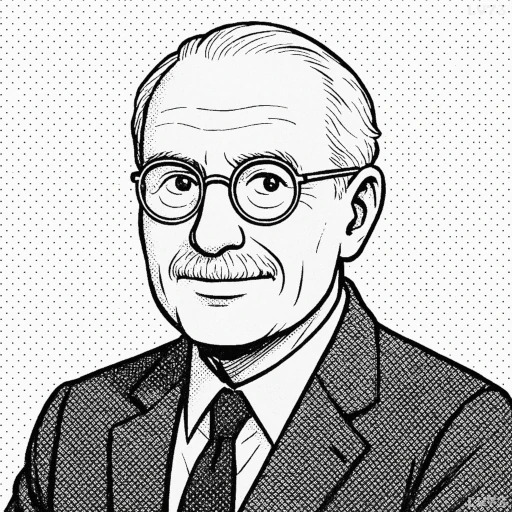“The Christ-symbol is of the greatest importance for psychology in so far as it is perhaps the most highly developed and differentiated symbol of the self, apart from the figure of the Buddha.”

- July 26, 1875 – June 6, 1961
- Born in Switzerland
- Psychiatrist and psychologist
table of contents
Quote
“The Christ-symbol is of the greatest importance for psychology in so far as it is perhaps the most highly developed and differentiated symbol of the self, apart from the figure of the Buddha.”
Explanation
In this quote, Carl Jung highlights the Christ-symbol as a central and highly significant archetype in psychological development, specifically in the context of the Self, which is a key concept in Jungian psychology. The Self represents the totality of the psyche, integrating both the conscious and unconscious aspects of the mind. Jung believed that the Christ-symbol—like the figure of the Buddha—represents an idealized and unified state of wholeness and spiritual fulfillment, embodying both divinity and humanity. The Christ figure, with his life, death, and resurrection, serves as a profound symbol of the process of individuation: the psychological journey toward self-realization and the integration of opposites within the psyche, such as light and dark, good and evil, divine and human. Jung viewed the Christ-symbol as a model for the individuation process, offering a template for integrating various aspects of the self into a more harmonious, whole, and transcendent state.
Historically, the Christ-symbol is deeply rooted in Western culture, where it has shaped religious, philosophical, and psychological thinking for centuries. For Jung, the Christian symbol of Christ had a unique place in the collective unconscious, representing not only religious ideals but also broader psychological truths about the human condition. Jung often referred to religious symbols—such as Christ, the Buddha, or even mythological figures—as manifestations of archetypes, universal patterns of experience and energy that shape our understanding of life, death, and transformation. In this sense, the Christ-symbol for Jung transcends its religious context and becomes a powerful psychological tool for understanding the human journey toward wholeness. He saw the integration of spiritual and psychological dimensions as key to true personal growth, believing that these archetypes provide insight into both the individual’s inner world and the collective human experience.
In modern psychological practice, Jung’s focus on symbols like Christ and the Buddha continues to influence areas such as depth psychology, transpersonal psychology, and even therapy. These archetypes are seen as powerful guides for individuals seeking a deeper understanding of themselves and their spiritual path. For example, in dream analysis or active imagination practices, individuals may encounter archetypal figures such as Christ or the Buddha, and engage with them to gain insight into their psychological state or personal challenges. Jung’s understanding of these symbols as representations of the Self provides a framework for integrating spirituality and psychology. This view has influenced modern mindfulness and spiritual psychology, where the exploration of universal symbols helps individuals connect to a greater sense of meaning and purpose in life. Jung’s perspective on the Christ-symbol offers a way to understand the profound psychological and spiritual transformation that can occur when we confront and integrate the depths of our unconscious mind, ultimately leading to a more complete and authentic self.
Would you like to share your impressions or related stories about this quote in the comments section?
